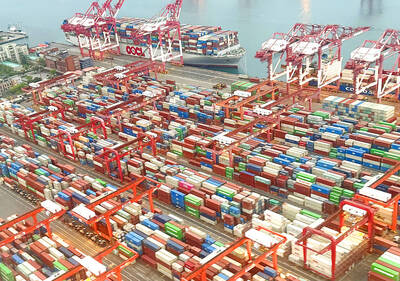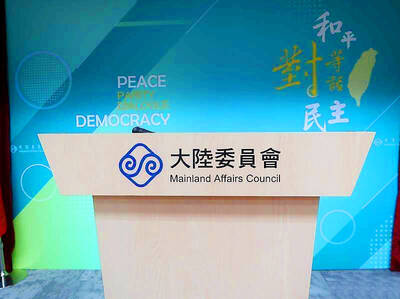The early 70s spelt the beginning of a 'new era'. The old Tourism Department of 1959 was then upgraded into the Tourism Development Corporation.
The formation of the Tourism Development Corporation (TDC) in 1972 and placing it under the purview of the Ministry of Trade and Industry (MITI) for strategic planning and focus charted a new era in the history of the tourism industry. That was the same year Malaysia Airlines was formed (1972). It was the dawn of a new beginning and both TDC and MAS were tasked to put Malaysia on the world tourist map. Since then, the Malaysian economy remains relatively robust with manufacturing and tourism taking the lead.
Today, the tourism industry has experienced a rapid growth and gained an importance in the Malaysian economy. It is the second largest foreign exchange earner, after manufacturing. This is in line with the government's objective to accelerate the domestic private sector and stimulate the services sector to spearhead economic growth.
Tourism's Contribution
In the context of tourism receipts, the contribution from this sector has been very encouraging. For instance, the Malaysian economy registered RM17.40 billion in receipts from 10.22 million visitors in 2000 (just a year after implementing the three-pronged action). This constituted a 28.9 per cent increase between 1999 and 2000. With the exception of 2003 (SARS & Gulf War), this upward trend continued until today.
From the tourism receipts (tourism revenue) contribution, there exists a steady growth. For example, tourism receipts increased from RM17.40 billion in 2000 to RM24.20 billion a year later and then increased further to RM25.80 billion (2002), RM29.7 billion (2004) and RM32.00 billion in 2005. Last year Malaysia received RM36.3 billion (USD10.4 billion) in tourism receipts.
The top 10 markets in 2006 were Singapore (9,656,251 arrivals), Thailand (1,891,921 arrivals), Indonesia (1,217,024 arrivals), Brunei (784,446 arrivals), China (439,294 arrivals), Japan (354,213 arrivals), India (279,046 arrivals), Australia (277,125 arrivals), United Kingdom (252,035 arrivals) and the Philippines (211,123 arrivals).
Gross Domestic Product (GDP)
Malaysia's services sector is the largest sector in the economy, contributing 52.4% to GDP and 48.6% to total employment in 2000. The government views the services sector as a catalyst for growth. Last year, the national GDP was at RM1,098.3 billion or USD 313.8 billion (constant 1987 prices) with a growth of 5.9 % of which RM36.3 billion or USD 10.3 billion came from the tourism sector thus making it as the second economic contributor for 2006. The Services Sector accounts about 54 % of the national GDP.
Retail sector
With the introduction of the MEGA SALE Carnival in 1999, the economy received a boost from the retail sector.
The Malaysian tourism authority has undertaken efforts to position Malaysia as a leading international shopping destination. The Mega Sales Carnivals were held on a nationwide basis were successful in attracting more shoppers. Each Mega Sale has managed to attract additional half a million foreign visitors and day-trippers from the neighbouring countries, on top of the normal tourist arrivals. The effort facilitated the growth in tourism expenditure and consumer demand, which enhanced the growth of retail trade.
For instance, in 2003, the retail sector made up just over 13% of Malaysia's gross domestic product (GDP) and employed about 730,000 workers, or 7% of the total workforce. Then in 2005, the retail sector made a 10.2 % growth in sales over the same period in 2004.
Its relations to other sectors of the economy, such as wholesaling, advertisement and promotions, info technology and logistics, ensure it that it has a pivotal role to play.
Education tourism
The increase in the number of institutions of higher learning and twinning programmes with foreign universities provided the foundation for the growth in education tourism. Currently, over 50,000 foreign students registered with institutions of higher learning in the country. There are additional spins-offs as parents of foreign students took the opportunity to spend their holidays at tourist attractions when visiting their children.
Education tourism has become popular as reflected by the demand for tours to visit schools to enable students from other countries to gain knowledge of the school education system as well as experience the Malaysian school atmosphere, which is unique with the social interaction of the various ethnic groups besides contributing to the national economy.
Medical and Health Sector
Since it was introduced in 1999, the medical and health tourism has contributed handsomely to the national economy. Last year (2006), a total of 296,687 health tourists visited Malaysia yielding revenue totalling RM203.66 million (USD32.8 million).
Malaysia My Second Home
Malaysia My Second Home Programme is promoted by the Government of Malaysia to allow people from all over the world who fulfil certain criteria, to stay in Malaysia as long as possible on a social visit pass with a multiple entry visa.
The Social Visit Pass is initially for a period of ten (10) years (depending on the validity of the applicants' passport) and is renewable. The programme has managed to attract more than 10,000 foreigners since it was introduced in 1996 to date. Last year alone there were 1,728 people registered under the programme, which has various flexible conditions, and was introduced to enable foreigners with a high income to stay in the country for at least five years or for a longer period of time.
Visit Malaysia Year 2007
This year, Malaysia's focus will be on the Visit Malaysia Year (VMY) 2007, was is aimed at aggressively promoting Malaysia, increasing tourist arrivals, as well as encouraging domestic tourism among Malaysians.
Coincidentally, 2007 is also the year of Malaysia's 50th independence. As such, the Visit Malaysia Year campaign is a timely event to celebrate Malaysia's golden jubilee. It is an occasion to rejoice and to share with the world the unique qualities and virtues that have shaped Malaysia to be the country that it is today.
The VMY 2007 campaign is expected to raise the awareness of foreign tourists to enable them to plan their holidays in Malaysia. For VMY 2007, the country has set a target to attract 20.1 million tourists.
Overall, there are over 240 events, of which, 50 being major events and 5 as international mega events. All these events are presented in 'One Golden Celebration'. A celebration that brings Malaysia to the world, and the world to Malaysia.
The first event of the year was the Visit Malaysia Year Grand Launch on 6 January by the Honourable Prime Minister of Malaysia in the presence 500 international media and trade representatives from all over the world. Highlight of the Grand Launch was the unveiling of the Eye on Malaysia, which is a 60-metre Ferris Wheel followed by the Flora Fest Parade, a spectacular display of floats dressed in all kinds of flowers found in Malaysia.
The other mega events include the Malaysian International Aerospace Adventure, the International Fireworks Display, the Malaysian International Tattoo and the KL International Buskers Festival.

MORE VISITORS: The Tourism Administration said that it is seeing positive prospects in its efforts to expand the tourism market in North America and Europe Taiwan has been ranked as the cheapest place in the world to travel to this year, based on a list recommended by NerdWallet. The San Francisco-based personal finance company said that Taiwan topped the list of 16 nations it chose for budget travelers because US tourists do not need visas and travelers can easily have a good meal for less than US$10. A bus ride in Taipei costs just under US$0.50, while subway rides start at US$0.60, the firm said, adding that public transportation in Taiwan is easy to navigate. The firm also called Taiwan a “food lover’s paradise,” citing inexpensive breakfast stalls

TRADE: A mandatory declaration of origin for manufactured goods bound for the US is to take effect on May 7 to block China from exploiting Taiwan’s trade channels All products manufactured in Taiwan and exported to the US must include a signed declaration of origin starting on May 7, the Bureau of Foreign Trade announced yesterday. US President Donald Trump on April 2 imposed a 32 percent tariff on imports from Taiwan, but one week later announced a 90-day pause on its implementation. However, a universal 10 percent tariff was immediately applied to most imports from around the world. On April 12, the Trump administration further exempted computers, smartphones and semiconductors from the new tariffs. In response, President William Lai’s (賴清德) administration has introduced a series of countermeasures to support affected

CROSS-STRAIT: The vast majority of Taiwanese support maintaining the ‘status quo,’ while concern is rising about Beijing’s influence operations More than eight out of 10 Taiwanese reject Beijing’s “one country, two systems” framework for cross-strait relations, according to a survey released by the Mainland Affairs Council (MAC) on Thursday. The MAC’s latest quarterly survey found that 84.4 percent of respondents opposed Beijing’s “one country, two systems” formula for handling cross-strait relations — a figure consistent with past polling. Over the past three years, opposition to the framework has remained high, ranging from a low of 83.6 percent in April 2023 to a peak of 89.6 percent in April last year. In the most recent poll, 82.5 percent also rejected China’s

PLUGGING HOLES: The amendments would bring the legislation in line with systems found in other countries such as Japan and the US, Legislator Chen Kuan-ting said Democratic Progressive Party (DPP) Legislator Chen Kuan-ting (陳冠廷) has proposed amending national security legislation amid a spate of espionage cases. Potential gaps in security vetting procedures for personnel with access to sensitive information prompted him to propose the amendments, which would introduce changes to Article 14 of the Classified National Security Information Protection Act (國家機密保護法), Chen said yesterday. The proposal, which aims to enhance interagency vetting procedures and reduce the risk of classified information leaks, would establish a comprehensive security clearance system in Taiwan, he said. The amendment would require character and loyalty checks for civil servants and intelligence personnel prior to